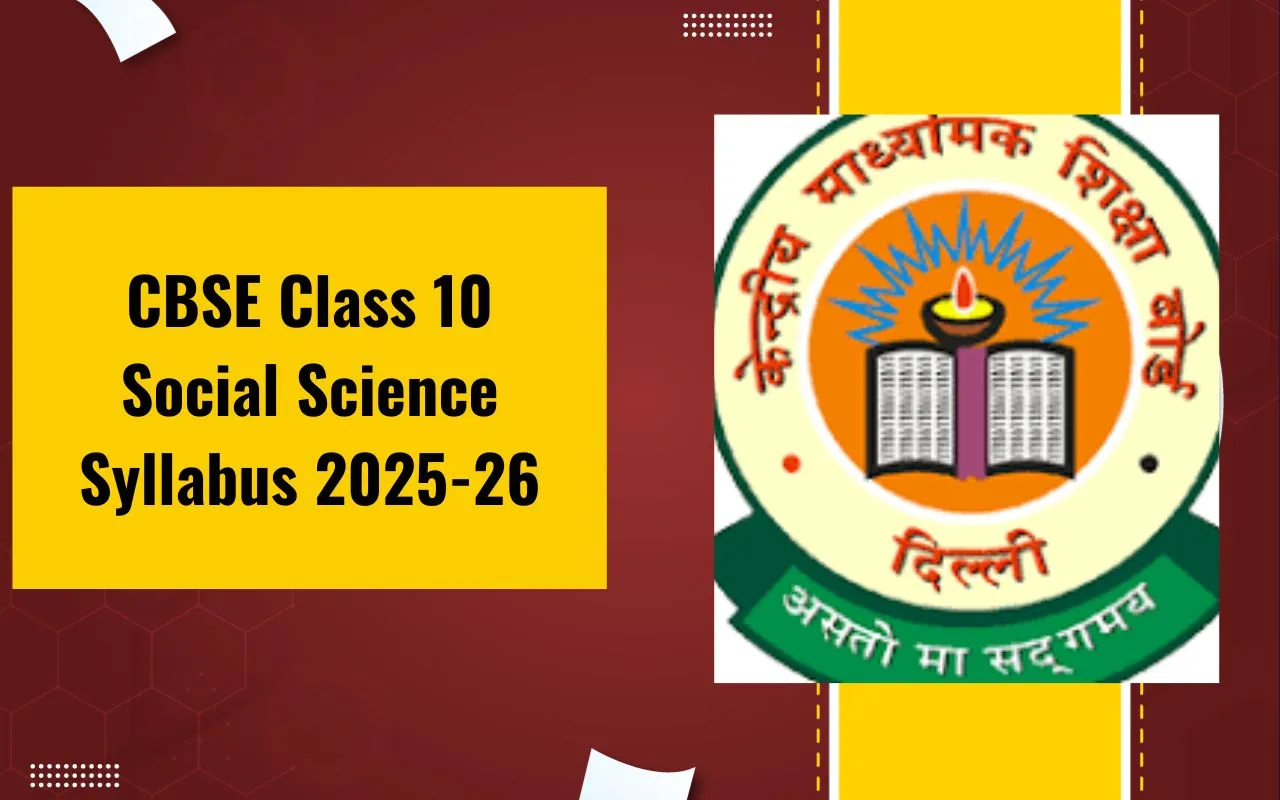
CBSE Class 10 Social Science Civics Notes Chapter 2: One of the main ways that democracy today shares power is through the division of authority among the several tiers of government, as you discovered in Chapter 1. You will learn about Indian federalism—both theory and practice—in this chapter. By the time this chapter ends, you will have a better understanding of the local government—the third and newest level of Indian federalism.
The CBSE Class 10 Social Science Civics Notes Chapter 2 is compiled here and will provide you with a comprehensive understanding of the chapter and all of the key ideas. Using the link below, you can download the CBSE Class 10 Social Science Civics Notes Chapter 2.CBSE Class 10 Social Science Civics Notes Chapter 2 PDF
The first section of the chapter provides an overview of federalism, including its foundational ideas and practices in India. A consideration of the politics and policies that have strengthened federalism in reality follows the examination of the federal constitution's provisions. Students can check the CBSE Class 10 Social Science Civics Notes Chapter 2 Federalism PDF here -CBSE Class 10 Social Science Civics Notes Chapter 2 PDF
CBSE Class 10 Social Science Civics Notes Chapter 2
Federalism
Federalism is a form of government in which the nation's component units and a central authority share authority. There are two tiers of governance in a federation. These two tiers of government each enjoy their authority apart from one another. One is the national government, which oversees a few issues of shared concern to the whole nation. provincial or state governments, which handle a large portion of the day-to-day management of their respective states.Difference Between Unitary System and Federal System
Below we have provided the difference between the Unitary System and the Federal System.| Unitary System | Federal System |
| Either the central government is the only level of government, or the subunits report to it. | The government is divided into two or more tiers. |
| The province or local governments may get orders from the central government. | The Central Government cannot order the state government to do something. |
| The administrative divisions only exercise the authority that the central government has granted them, and the central government is ultimately supreme. The central government has the authority to increase or decrease their powers. | State Government has powers of its own for which it is not answerable to the central government. |
Key Features of Federalism
Among the federalism system's salient characteristics are:- The government is divided into two or more tiers.
- The same citizens are governed by several levels of government, but each level has exclusive authority over certain areas of law, taxation, and government operations.
- The constitution guarantees each level of government's existence and power.
- One level of government cannot unilaterally alter the core tenets of the Constitution.
- Both governmental levels must approve such modifications.
- Courts have the authority to interpret various governmental branches' authority as well as the Constitution.
- To maintain each level of government's financial independence, its revenue sources are spelt out.
- The federal system seeks to accomplish two goals: (i) preserve and advance national unity; and (ii) take into account regional variety.
Different Routes Through Which Federations Can Be Formed
The institutions and application of federalism depend on two things: an understanding of coexistence and confidence between the many tiers of government. Federations have come into being via two different paths. The first option entails independent States uniting independently to form a larger entity. Australia, Switzerland, and the United States of America have formed this type of "coming together" federation. The second possibility is that a sizable nation chooses to allocate its authority between the federal government and its component states. Spain, Belgium, and India are examples of federations that adhere to this style of "holding together."What Makes India a Federal Country?
The Indian Constitution's provisions are subject to all the characteristics of the federal system. The Union Government and the State Governments are each given three separate sets of legislative authority under the Indian Constitution. Below is a mention of the three lists:1) Union List: It covers topics of national significance, including foreign policy, banking, currency, communications, and national defence. Only the Union Government has the authority to enact legislation on the topics included in this list.
2) State List: It includes topics like police, trade, commerce, agriculture, and irrigation that are significant to the state and municipal governments. Only the State Governments have the authority to enact legislation on the topics included in this list.
3) Concurrent List: This list comprises topics that the State and Union governments find to be of mutual interest. Education, forests, trade unions, marriage, adoption, and succession are all on the list.
On the topics included in this list, legislation may be made by the Union Government as well as the State Governments. In the event of a contradiction between their laws, the Union Government's law will take precedence.How Is Federalism Practised?
India's federalism is genuinely successful because of its democratic political system. Examine a few of the main ways that federalism is applied in India.Linguistic States
The first and most significant test of democratic politics in India was the establishment of linguistic States. Many ancient States disappeared, and numerous new States were formed between 1947 and 2017. States' names, boundaries, and areas have all altered. People who speak the same language have founded certain states. Linguistic States are the name given to these states.Language Policy
The language policy is the second litmus test for the Indian federation. It was decided that Hindi would be the official language. The Constitution recognises 21 other languages in addition to Hindi as Scheduled Languages. States also have official languages, and official language is used for government business in certain states.Centre-State relations
Another way that federalism has been reinforced in practice is by restructuring the relationship between the Centre and the State. If no party wins a resounding majority in the Lok Sabha, the main national parties may create coalitions with several other parties, including several regional parties, to form a central government. As a result, there is now a fresh way of power sharing and respect for state governments' independence.Decentralisation in India
Decentralization is the process of giving local government authority over state and federal administrations. Decentralization is based on the fundamental tenet that most disputes and problems should be resolved locally. Additionally, locals have direct access to the decision-making process. In 1992, a significant step towards decentralization was made. To strengthen and expand the authority of the third degree of democracy, the Constitution was modified. These are the three-tier democracy's salient characteristics:- The holding of periodical elections for local government entities is mandated under the constitution.
- The executive leaders of these organisations as well as the elected bodies reserve seats for members of the Scheduled Castes, Scheduled Tribes, and Other Backward Classes.
- Every post has a minimum of one-third set aside for women.
- Every State has established a State Election Commission to oversee municipal and panchayat elections.
- Local government organizations must get a certain amount of funding and authority from state governments. States differ in what constitutes sharing.
Panchayati Raj System
Local government in rural areas is commonly referred to as Panchayati Raj. A gram panchayat is a village, or in certain states, a group of villages. This is a council headed by a president, also known as sarpanch, and made up of several ward members, also known as panch. They are chosen by all of the adult residents of a ward or village. The village's gram panchayat is the body that makes decisions. With the Gramme Sabha's general supervision, the Panchayat operates. The village's members are also its voters. It must convene at least twice or three times a year to approve the gram panchayat's yearly budget and assess the panchayat's performance. A Panchayat Samiti, Block, or Mandal is created when Gramme Panchayats are gathered together. All of the Panchayat members in that region vote to choose the representatives for the Panchayat Samiti. An entire district's Panchayat Samitis or Mandals come together to form the Zilla (district) Parishad. Zilla Parishad members include members of the Lok Sabha, district MLAs, and some other officials from various district-level organizations.Municipalities
Similar to how gram panchayats are for rural regions, municipalities are for urban areas. Municipal Corporations are the governing bodies of large cities. Elected bodies made up of the representatives of the people govern both Municipalities and Municipal Corporations. The Municipality's political leader is the Municipal Chairperson. An officer of a municipal corporation is known as the mayor. The world's largest democracy experiment is underway with this new local government structure. Local governments' constitutional standing has contributed to the strengthening of democracy in our nation. Additionally, it has improved the voice and representation of women in our democracy.Related Links
| CBSE Class 10 Social Science History Notes |
| CBSE Class 10 Social Science Geography Notes |
| CBSE Class 10 Social Science Civics Notes |
| CBSE Class 10 Social Science Economics Notes |
CBSE Class 10 Social Science Civics Notes Chapter 2 FAQs
What is federalism in very short notes?
What is the second chapter of civics class 10?
Why is federalism better?










